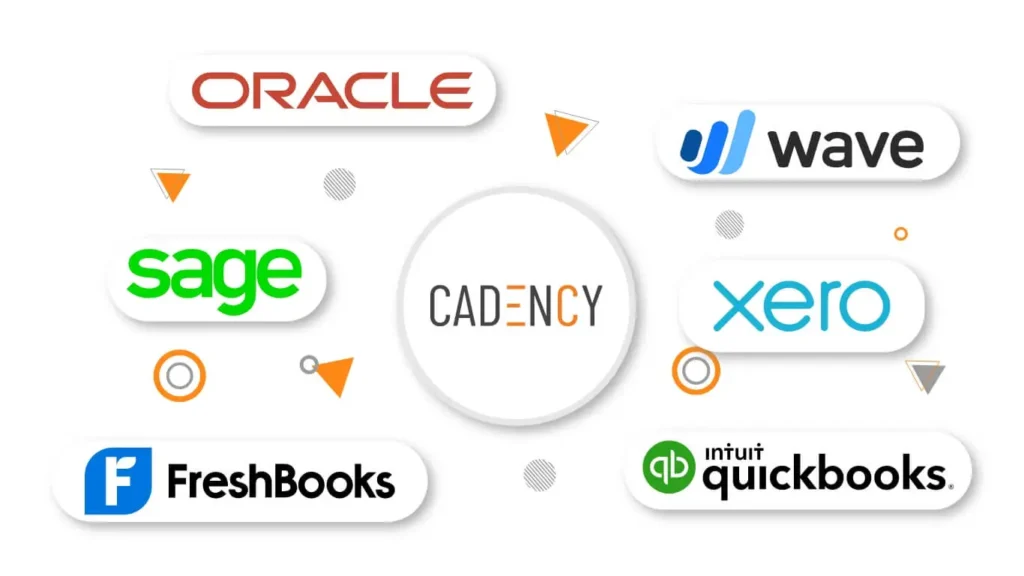As a finance lead, you understand that an organization’s cash flow is its lifeblood, and at its core lies operational efficiency. Factors such as employee time, operational costs, and customer satisfaction play a critical role in optimizing business effectiveness. In the operational landscape of every business, the adoption of either an ERP or an accounting platform is ubiquitous, both of which integrate the essential functionality of managing accounts receivable. The key question becomes: does the native functionality offer adequate automation for managing accounts receivable processes efficiently? Integrating ERP with AR automation offers a transformative solution that can significantly enhance the operational performance of businesses within the order-to-cash workflow as it paves the way for sustained success in an ever-evolving industry.
In this article
Understanding the Need for ERP Systems
Enterprise Resource Planning (ERP) systems serve as the backbone of organizational processes, utilized as an organization-wide management tool by consolidating data from various departments into a centralized platform. This comprehensive solution assists small and mid-sized businesses (SMBs) with various aspects of financial management, accounts receivable, project management, and inventory tracking, among other functions. These tools assist organizations in managing common business functions and day-to-day activities. However, ERP systems do not support efficient workflows or easily adapt to evolving business needs. As operational complexities increase and unstructured data volumes surge, companies find it challenging to utilize data effectively for making strategic business decisions. Further, rapid business growth often ends up surpassing the capabilities of native ERP systems, necessitating the exploration of scalable and top-tier niche solutions, such as AR automation software, to address these challenges.
Understanding Accounts Receivable Automation
In its most straightforward definition, accounts receivable automation optimizes repetitive and tedious tasks associated with invoicing and payment collection. This software replaces the labour-intensive manual aspects of the accounts receivable process, streamlining a company’s financial interactions with its customers and expediting the invoice-to-cash cycle — encompassing all the necessary steps between a customer making a purchase and the company receiving payment for the purchase.
The accounts receivable team is responsible for sending invoices, processing payments, and reconciling the books. When done manually, this process is time-consuming, particularly when it involves multiple follow-ups with customers to track down payments. Accounts receivable automation software takes on these tasks, freeing up the AR team to focus on analyzing the broader financial landscape, potentially contributing to increased profitability.
Why the Need for ERP Integration and Accounts Receivable Automation?

When the inherent features of an ERP or accounting platform fall short of meeting the operational needs of a business, the potential arises for the proliferation of disparate systems, manual processes, and isolated data. This misalignment can lead to a fragmented and less efficient operational landscape, characterized by disconnected processes and data silos, impeding the seamless flow of information and hindering overall effectiveness.
Integrating ERPs with specialized platforms featuring rich functionalities proves instrumental in streamlining workflows, diminishing the reliance on labour-intensive manual processes, and substantially enhancing overall productivity. This integration fosters a cohesive and efficient operational environment by connecting ERPs to tools tailored to meet specific business needs. The result is a seamless exchange of data between systems, eliminating barriers associated with manual interventions and reducing redundancies and errors.
Accounts receivable automation platforms offer significant advantages when seamlessly integrated into ERP or accounting platforms. This integration streamlines the entire accounts receivable process, reducing manual data entry and minimizing errors. Enhanced efficiency leads to faster invoice processing and improved cash flow management. Real-time tracking and monitoring of receivables provide businesses with immediate access to critical financial data. Additionally, automated reminders and follow-ups contribute to the reduction of late payments and overdue invoices. This approach not only expedites cash collection but also strengthens client relationships through consistent and professional communication. Ultimately, the integration of accounts receivable automation platforms into accounting systems contributes to a more streamlined, accurate, and proactive approach to managing receivables, positively impacting the overall financial health of a business.
Benefits of Integrating Your ERP with Accounts Receivable Automation
There are some major advantages associated with ERP system integration and accounts receivable automation. To start, integrating custom order-to-cash software with a comprehensive ERP solution can result in reduced resource consumption, minimized errors, and improved predictability of customer demand. Aside from freeing up personnel from routine tasks, and facilitating engagement in more strategic initiatives, ERP system integration enhances operations, enables better customer communication, and provides a centralized platform for tracking financials and inventory. Here are some core advantages of integrating your ERP with AR automation.
Experience the Power of AR Automation!
1. Enhanced Visibility and Control
The ERP system holds the data your AR application needs. Integrating ERP and AR automation provides real-time insights into financial transactions. It removes the need for exporting data from various systems. This heightened visibility enables executives to make informed decisions promptly, fostering better control over financial operations.
2. Reduced Errors and Costs
Automation minimizes the risk of human errors in data entry and sales related books and records. This not only enhances accuracy but also contributes to sales tax compliance, ensuring financial statements are accurate. By integrating ERP and AR automation systems, businesses can reduce duplication issues and operational expenses associated with manual invoice processes and data entry.
3. Accelerated Cash Flow
Streamlining the AR process expedites payment collection and increases cash flow. By automating invoicing, reminders, and reconciliation, organizations can significantly reduce the days sales outstanding (DSO) and customer payment friction while optimizing cash flow and liquidity.
4. Efficient Payment Tracking & Dispute Resolution
When a payment is late, the automated AR platform notifies relevant teams, quickly addresses disputes, identifies the escalation activity required and tracks the payment status. All outstanding payments are handled efficiently. Further, invoices, payment reminders, and follow-ups are automatically sent via email which cuts the cost of manual labour and saves time for the AR teams to focus on other revenue-generating activities.
5. Increased Operational Efficiency
Integration facilitates seamless communication between ERP and AR systems, eliminating silos and redundancies. This results in a more efficient workflow, reducing manual intervention and allowing finance teams to focus on strategic initiatives.
Best Practices to Achieve Seamless AR Integration
Efficient data integration is essential for seamless data transfer between the two systems. However, integration can be a challenging process. The following best practices will ensure a coherent ERP integration with the AR automation system.
1. Thorough System Assessment
Before integration, conduct a comprehensive analysis of existing ERP and AR systems. Define clear objectives and ask what main business problems you want to solve and what functions you want to automate. By identifying gaps, redundancies, and potential areas for improvement, you will be able to ensure a tailored integration strategy for the automation process.
2. Invest in Scalable Solutions
Choose ERP and AR automation solutions that are scalable to accommodate future growth and evolving business requirements. You don’t want to switch platforms every couple of years. Scalability ensures the longevity and relevance of the integrated system, enabling the platform to grow with your business needs.
3. Collaborative Change Management
Implementing integration requires collaboration across departments. Engage key stakeholders early, provide comprehensive training, and communicate the benefits of the integration to foster a smooth transition.
4. Data Security and Compliance
Prioritize data security and compliance throughout the integration process. Ensure that the integrated system aligns with industry regulations and standards to safeguard sensitive financial information.
5. Adequate Documentation and Training
Before deploying integration, it is imperative to properly document and test for reliability. Proper testing of how well the two systems communicate will enable you to identify potential issues and resolve them quickly. To ensure a successful integration, you need to provide proper training, documentation, and support to your teams.
6. Continuous Monitoring and Optimization
Post-integration, establish monitoring mechanisms to track performance metrics. Regularly optimize the integrated system based on feedback, technological advancements, and evolving business needs.
Unlock the Combined Powers of ERP and AR Automation
When considering ERP system integration and accounts receivable automation, it is crucial to select software solutions tailored to your specific business needs. Prioritize providers that emphasize innovation, demonstrate a commitment to supporting long-term organizational success, and offer products distinguished in the realms of automation and customization. By adopting the most suitable order-to-cash software, you can confidently ensure that your financial operations adhere to high standards of safety, efficiency, and accuracy.
Effectively implementing ERP system integration and accounts receivable automation into your organization’s order-to-cash workflow enables you to maximize operational performance and secure a competitive edge in the ever-changing market. This strategic integration is not just a technological advancement but a catalyst for operational excellence. Investing in the right software solution will give you the key to succeed in today’s digital age.






